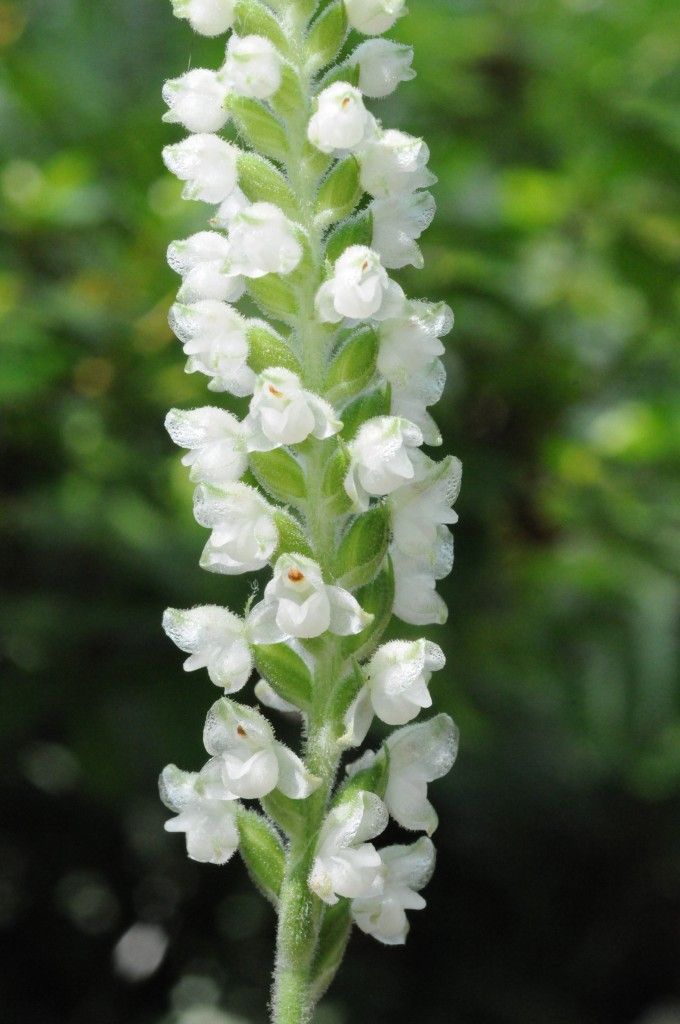Earthworms: A Nightmare for America’s Orchids?
Though assumed to be great for soil, earthworms actually may be killing off orchids by ingesting their seeds
/https://tf-cmsv2-smithsonianmag-media.s3.amazonaws.com/filer/3d/2a/3d2ab38e-786d-47c3-9cd1-1dbaddbe447b/earthworms.jpg)
Think twice before you order earthworms to improve the soil of your garden. A group of scientists from the Smithsonian Environmental Research Center (SERC) and Johns Hopkins University’s Department of Earth and Planetary Sciences recently published a study that shows the damage non-native earthworms, who creep their way into forests thanks to human activities like fishing and gardening, may cause to one of the world’s favorite flowers, the orchid.

Of more than 20,000 orchid species, the study focused on Goodyera pubescens, a tall, erect plant with white flowers common in America’s east coast forests, including those around the SERC campus in Edgewater, Maryland. The problem with earthworms, the scientists found, is that they reduce Goodyera pubescens’ numbers by ingesting their seeds, which are the size of dust specks and fall into the soil surrounding orchids when the plants flowers. As earthworms munch through the dirt, they swallow the microscopic seeds, preventing germination in two ways: Either the ingestion process kills the seeds before they make it out the earthworm’s other end, or the seeds survive ingestion but are reintroduced into the soil too deeply to access upper-level fungi nutrients required for growth.
The research team, made up of Melissa McCormick, Kenneth Parker and Dennis Whigham at SERC and Katalin Szlavecz at Hopkins, measured the effect of both possibilities over six weeks. They determined almost 80 percent of the seeds ingested in this time period could no longer grow, and almost a third were buried too deeply to flourish. By a conservative estimate, the study concludes, older forests—120 to 150 years old—around SERC would lose 49 percent of Goodyera orchid seeds to earthworm ingestion in a year, and younger forests—50 to 70 years old, where non-native earthworms flourish—would lose 68 percent.
These numbers do not suggest that earthworms are inherently bad for orchids. On the contrary, native earthworms keep the plants’ ecosystems in balance, and allow plenty of room for growth. What the numbers do show, explains McCormick, is that the unchecked introduction and proliferation of new earthworm species in forests has a dramatic effect that defies the conventional wisdom that earthworms always are great for soil health.
“Certainly where earthworms belong, when they’re in their correct system, they have a really major role in how the forest functions,” McCormick says. “The problem is when you get different species in there that are functioning very differently. People need to be a little bit more aware of what species sort of belong here and which ones don’t, and just be aware that they’ve having effects other than just how well your garden is doing. Yes, it’s certainly great for your garden, but it’s got a cost.”
That cost may stretch far beyond orchids. As part of a forest ecosystem, orchids actually are relatively insignificant, McCormick says; they are beautiful, but don’t contribute much. Yet earthworms also might disrupt the distribution and diversity of the fungi on which the orchid seeds feed, she explains, which would have a much more fundamental effect on the forest, because many plants depend on them. Orchids in this case would be like canaries in coal mines.
“Orchids are a way of seeing the health of an ecosystem,” says McCormick. “They depend on this very complicated interlinked system, where they depend on things above ground and other species below ground as well, so it’s an indication that the ecosystem is pretty healthy when they’re there.”
When they aren’t there, she cautions, the loss of beautiful flowers may be the least of our concerns.
/https://tf-cmsv2-smithsonianmag-media.s3.amazonaws.com/accounts/headshot/paul-bisceglio-240.jpg)
/https://tf-cmsv2-smithsonianmag-media.s3.amazonaws.com/accounts/headshot/paul-bisceglio-240.jpg)